Search Result
Results for "
chronic obstructive pulmonary disease. Asthma
" in MedChemExpress (MCE) Product Catalog:
6
Isotope-Labeled Compounds
| Cat. No. |
Product Name |
Target |
Research Areas |
Chemical Structure |
-
- HY-120595
-
|
RV568
|
p38 MAPK
Src
|
Inflammation/Immunology
|
|
JNJ-49095397 (RV568) is an inhaled narrow-spectrum kinase inhibitor (NSKI) against both the α and γ isoforms of p38 MAPK. JNJ-49095397 also inhibits SRC kinase family, specifically haematopoietic kinase (HCK) JNJ-49095397 shows potent anti-inflammatory effects and can be used for the research of chronic obstructive pulmonary disease (COPD) and asthma .
|
-
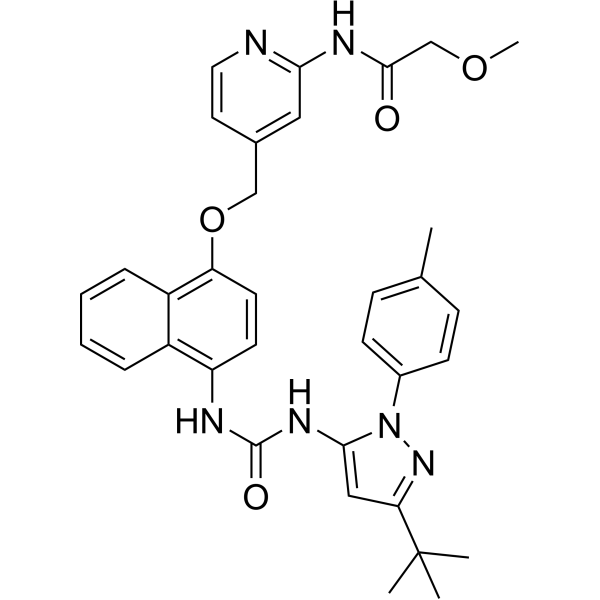
-
- HY-156963
-
|
FP-025
|
MMP
|
Inflammation/Immunology
|
|
Aderamastat (FP-025) is an orally active matrix metalloproteinase 12 (MMP-12) inhibitor. Aderamastat can be used for the research of asthma, chronic obstructive pulmonary disease (COPD), and pulmonary fibrosis .
|
-
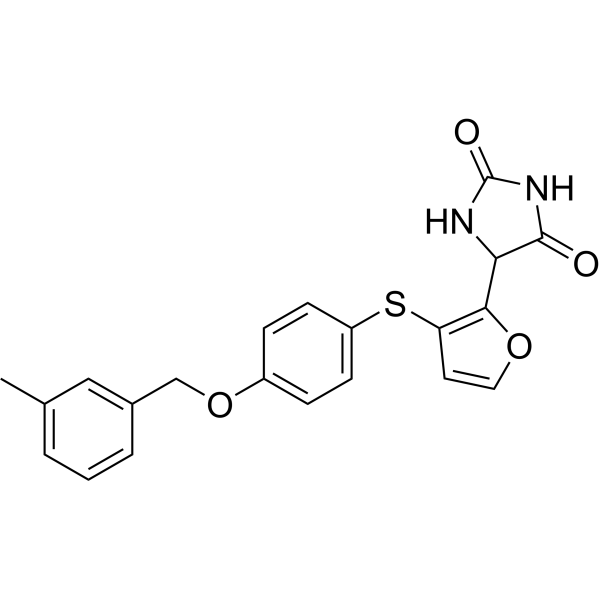
-
- HY-19830
-
|
|
Phosphodiesterase (PDE)
|
Inflammation/Immunology
|
|
AN3199 is a PDE4 inhibitor with an IC50 of 94.5 nM. AN3199 can be used for the research of inflammation-associated diseases such as asthma and chronic obstructive pulmonary disease (COPD) .
|
-
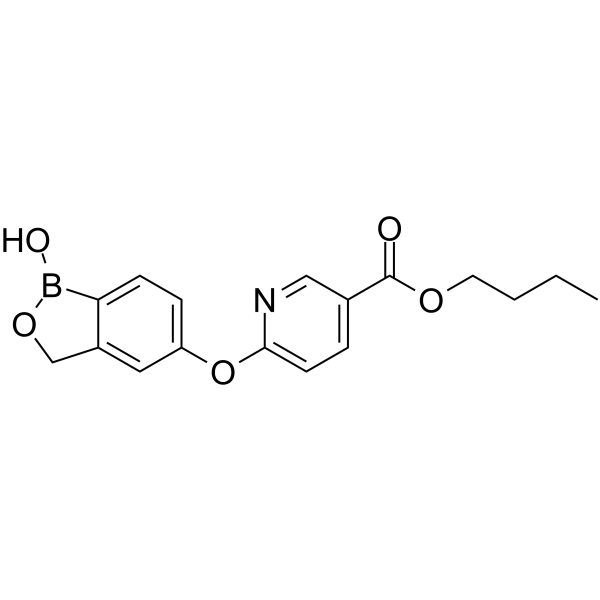
-
- HY-U00105
-
|
|
mAChR
|
Inflammation/Immunology
|
|
Oxitropium bromide is an mAChR antagonist used as an anticholinergic bronchodilator agent for the treatment of asthma and chronic obstructive pulmonary disease.
|
-
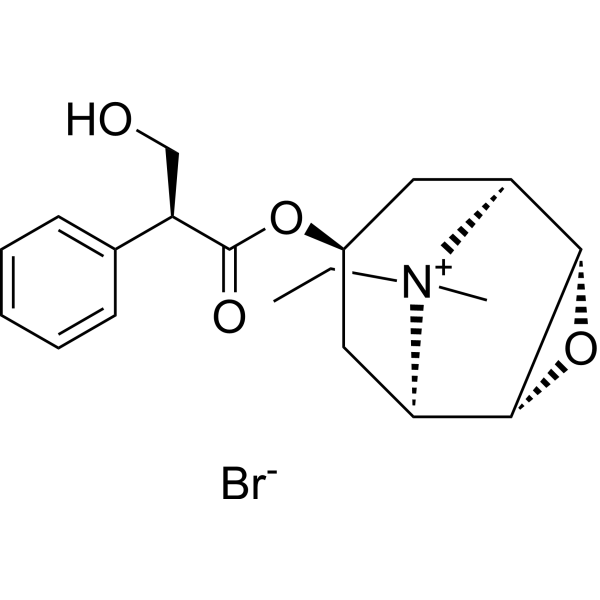
-
- HY-111144
-
|
AZD0548; LAS100977
|
Adrenergic Receptor
|
Inflammation/Immunology
|
|
Abediterol (LAS100977) is an inhaled long-acting β2-adrenoceptor agonist (LABA) and can be used for the research of asthma and chronic obstructive pulmonary disease (COPD) .
|
-
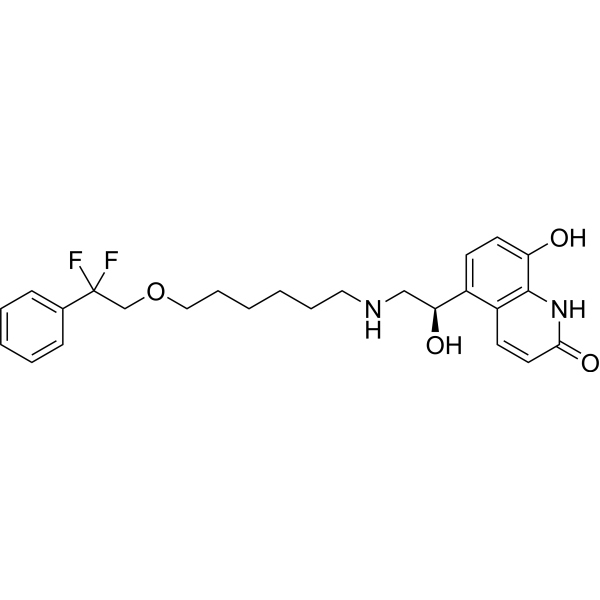
-
- HY-14117
-
-

-
- HY-B1037S
-
|
Albuterol-d3; AH-3365-d3
|
Adrenergic Receptor
|
Neurological Disease
Endocrinology
|
|
Salbutamol-d3 is the deuterium labeled Salbutamol. Salbutamol is a short-acting β2-adrenergic receptor agonist used for the relief of bronchospasm in conditions such as asthma and chronic obstructive pulmonary disease (COPD).
|
-
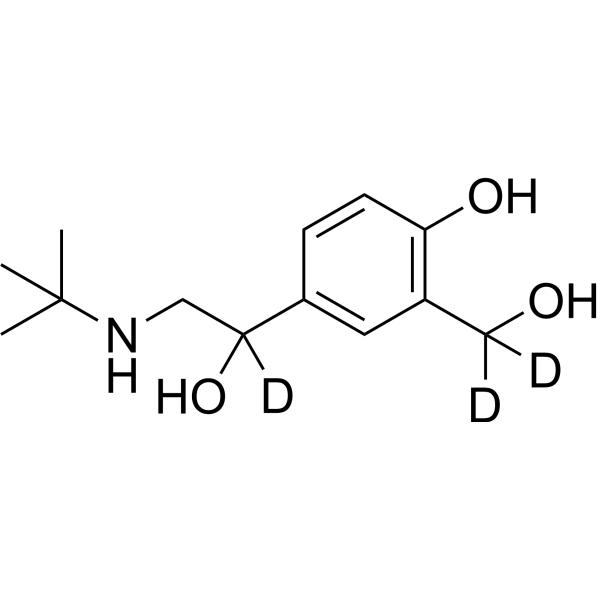
-
- HY-B1037S2
-
-
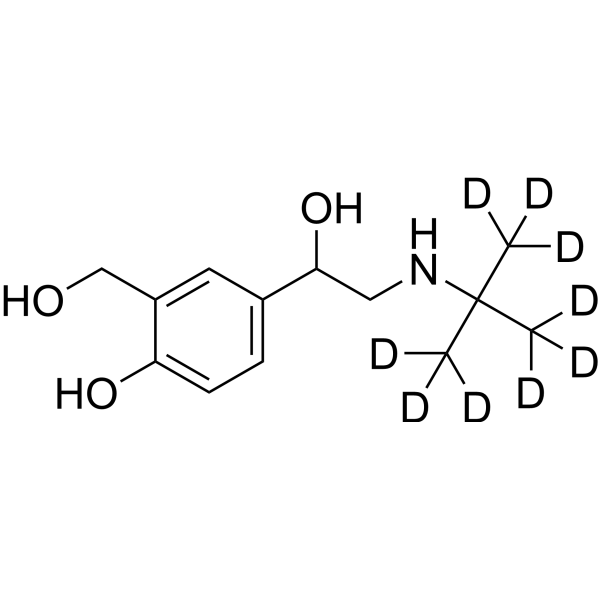
-
- HY-106564A
-
|
Ba 598Br; Flubron
|
Others
|
Inflammation/Immunology
|
|
Flutropium bromide (Ba 598Br) is a organic bromide salt of flutropium. Flutropium bromide shows an anticholinergic effect. Flutropium bromide effectively suppresses spasms and it can be used for the research of asthma and chronic obstructive pulmonary disease .
|
-

-
- HY-B1037S3
-
|
Albuterol-d9 acetate; AH-3365-d9 acetate
|
Adrenergic Receptor
|
|
|
Salbutamol-d9 (acetate) is the deuterium labeled Salbutamol[1]. Salbutamol is a short-acting β2-adrenergic receptor agonist used for the relief of bronchospasm in conditions such as asthma and chronic obstructive pulmonary disease (COPD).
|
-
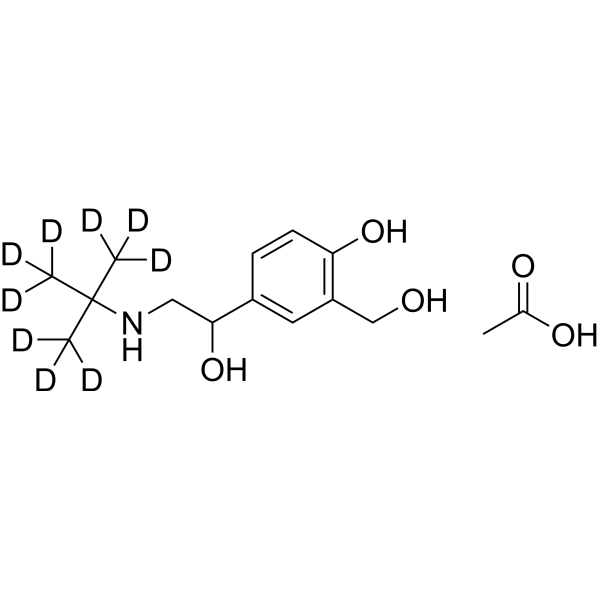
-
- HY-14189
-
|
R-411
|
Integrin
|
Inflammation/Immunology
|
|
Valategrast hydrochloride (R-411) is a potent integrin α4β1 (VLA-4) and α4β7 dual antagonist. Valategrast hydrochloride has the potential for Chronic obstructive pulmonary disease (COPD) and asthma treatment .
|
-

-
- HY-19672
-
|
BAY 19-8004
|
Phosphodiesterase (PDE)
|
Inflammation/Immunology
|
|
Lirimilast (BAY 19-8004) is a potent, selective and orally active phosphodiesterase-4 (PDE4) inhibitor with an IC50 value of 49 nM. Lirimilast can be used for the treatment of asthma or chronic obstructive pulmonary disease (COPD). Lirimilast has potently anti-inflammatory properties .
|
-
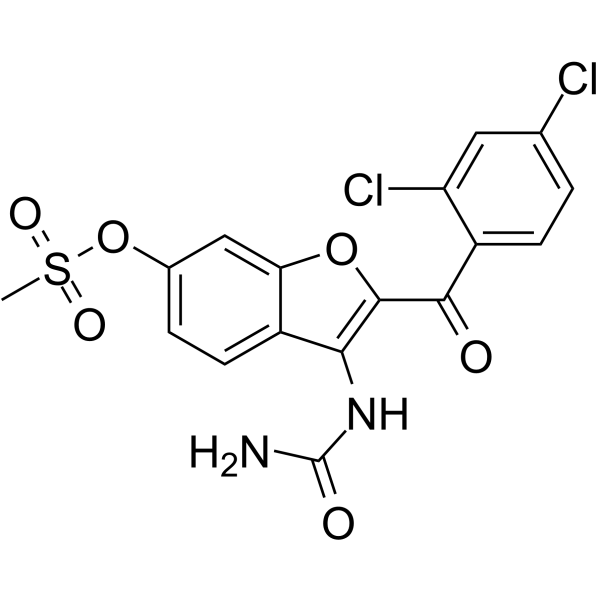
-
- HY-107591B
-
|
|
IKK
|
Inflammation/Immunology
|
|
PF-184 is a potent and selective IKK-2 inhibitor (IC50: 37 nM) over rhIKK-1, IKKi, and more than 30 tyrosine and serine/threonine kinases. PF-184 can be used in the research of inflammation, such as asthma and chronic obstructive pulmonary disease .
|
-

-
- HY-14190
-
|
R-411 free base
|
Integrin
|
Inflammation/Immunology
|
|
Valategrast (R-411 free base) is a potent and orally active integrin α4β1 (VLA-4) and α4β7 dual antagonist. Valategrast has the potential for Chronic obstructive pulmonary disease (COPD) and asthma treatment .
|
-
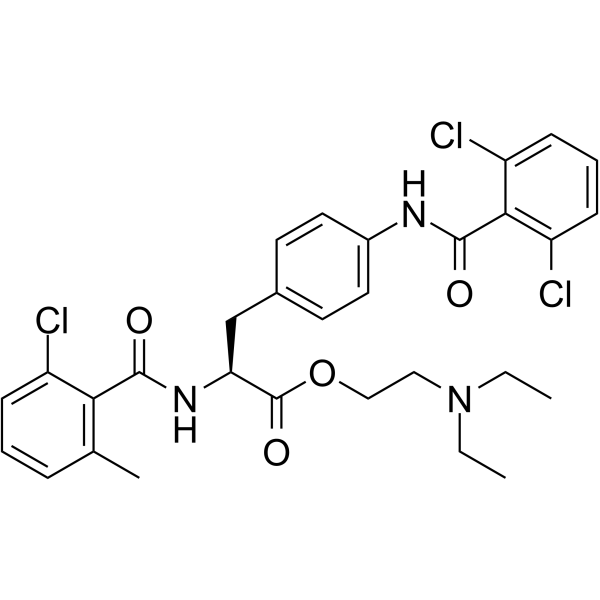
-
- HY-B0241S
-
|
Sch 1000-d3
|
mAChR
|
Neurological Disease
Inflammation/Immunology
|
|
Ipratropium-d3 (bromide) is the deuterium labeled Ipratropium bromide. Ipratropium bromide (Sch 1000) is a muscarinic receptor antagonist, with binding IC50 values of 2.9 nM, 2 nM, and 1.7 nM for M1, M2, and M3 receptors, respectively. Ipratropium bromide can be used in the research for COPD (chronic obstructive pulmonary disease) and asthma[1][2][3].
|
-

-
- HY-B1810
-
|
C-78 free base
|
Adrenergic Receptor
|
Inflammation/Immunology
Endocrinology
|
|
Tulobuterol (C-78 free base) is a long-acting β2-adrenoceptor agonist, which reduces the frequency of exacerbations of chronic obstructive pulmonary disease and bronchial asthma. Tulobuterol is also a sympathomimetic agent used as a transdermal patch, and increases normal diaphragm muscle strength .
|
-
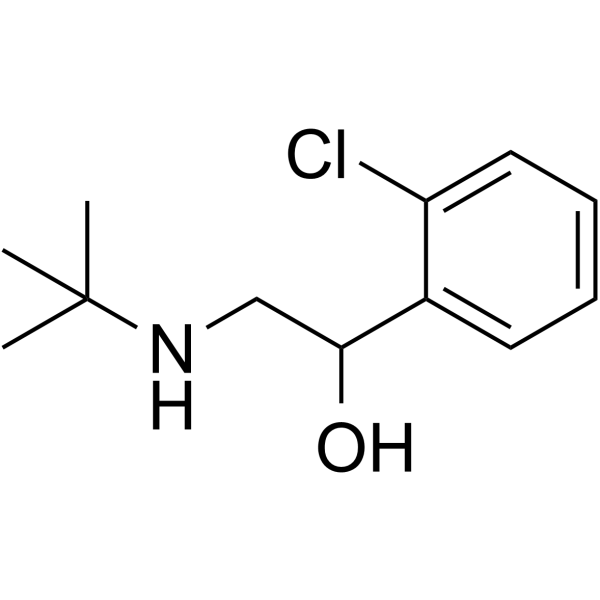
-
- HY-P99673
-
|
REGN-3500; SAR-440340
|
Interleukin Related
NF-κB
|
Inflammation/Immunology
|
|
Itepekimab (REGN-3500) is an IgG4 monoclonal antibody against IL-33. Itepekimab reduced airway inflammation and related tissue damage in preliminary clinical studies. Itepekimab has potential effects in asthma, chronic obstructive pulmonary disease (COPD), and atopic dermatitis (AD) .
|
-

-
- HY-B0241S1
-
|
Sch 1000-d7 (bromide)
|
mAChR
|
Neurological Disease
Inflammation/Immunology
|
|
Ipratropium-d7 (bromide)eis the deuterium labeled Ipratropium bromide. Ipratropium bromide (Sch 1000) is a muscarinic receptor antagonist, with binding IC50 values of 2.9 nM, 2 nM, and 1.7 nM for M1, M2, and M3 receptors, respectively. Ipratropium bromide can be used in the research for COPD (chronic obstructive pulmonary disease) and asthma[1][2][3].
|
-

-
- HY-B0241
-
|
Sch 1000
|
mAChR
|
Neurological Disease
Inflammation/Immunology
|
|
Ipratropium bromide (Sch 1000) is a muscarinic receptor antagonist, with IC50s of 2.9 nM, 2 nM, and 1.7 nM for M1, M2, and M3 receptors, respectively. Ipratropium bromide relaxes smooth muscle, can be used in the research for COPD (chronic obstructive pulmonary disease) and asthma .
|
-

-
- HY-B1332
-
|
Sch 1000 bromide hydrate
|
|
|
|
Ipratropium bromide (Sch 1000) hydrate is a muscarinic receptor antagonist, with IC50s of 2.9 nM, 2 nM, and 1.7 nM for M1, M2, and M3 receptors, respectively. Ipratropium bromide hydrate relaxes smooth muscle, can be used in the research for COPD (chronic obstructive pulmonary disease) and asthma .
|
-
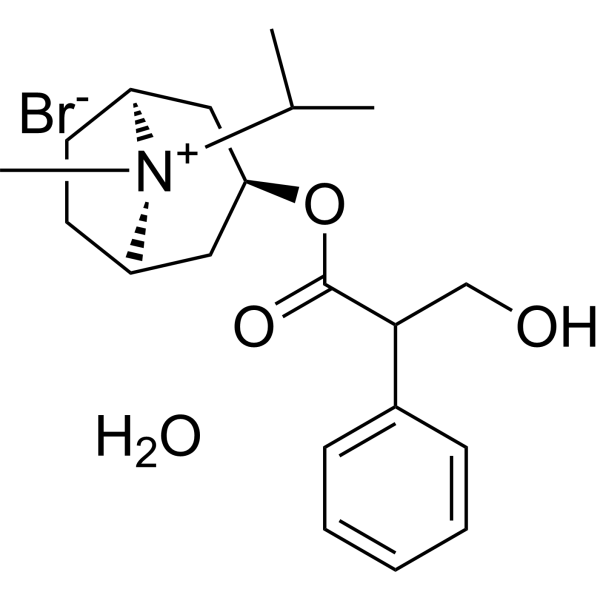
-
- HY-B1037
-
|
Albuterol; AH-3365
|
Adrenergic Receptor
ERK
|
Inflammation/Immunology
Cancer
|
|
Salbutamol (Albuterol) is a short-acting beta-2 adrenergic receptor agonist with oral activity. Salbutamol promotes tumorigenesis of gastric cancer cells through the β2-AR/ERK/EMT pathway. Salbutamol is used to study bronchospasms caused by asthma and chronic obstructive pulmonary disease (COPD) .
|
-
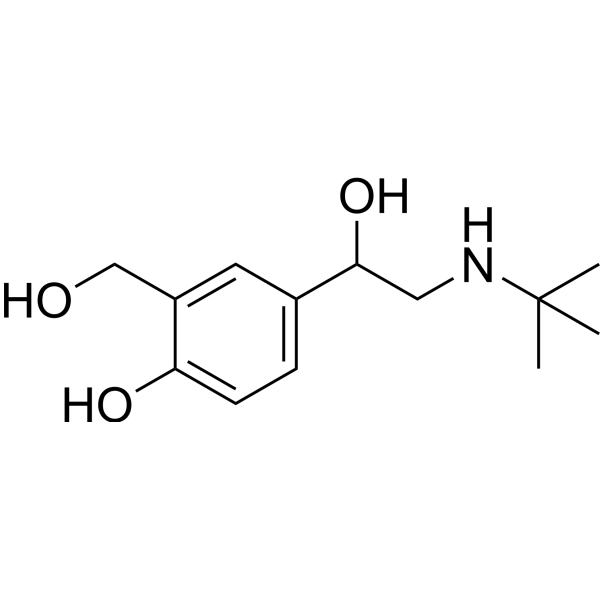
-
- HY-B0004
-
|
|
Adenosine Receptor
Phosphodiesterase (PDE)
Reactive Oxygen Species
|
Inflammation/Immunology
|
|
Doxofylline is an orally active PDE IV inhibitor and A1AR antagonist. Doxofylline reduces inflammation in epithelial cells via inhibiting mitochondrial ROS production and amelioration of multiple cellular pathways (NLRP3-TXNIP inflammasome activation). Doxophylline can be used in studies of asthma, chronic obstructive pulmonary disease, and bronchospasm .
|
-

-
- HY-W011733
-
|
C-78
|
Adrenergic Receptor
Influenza Virus
Antibiotic
|
Infection
Inflammation/Immunology
Endocrinology
|
|
Tulobuterol hydrochloride (C-78) is a long-acting β2-adrenoceptor agonist, which reduces the frequency of exacerbations of chronic obstructive pulmonary disease and bronchial asthma. Tulobuterol hydrochloride is also a sympathomimetic agent used as a transdermal patch, increases normal diaphragm muscle strength . Tulobuterol hydrochloride inhibit rhinovirus replication and modulate airway inflammation .
|
-

-
- HY-P2797
-
|
AMCase
|
Bacterial
|
Metabolic Disease
Inflammation/Immunology
|
|
Chitinase (EC 3.2.1.14) has partial lysozyme activity and is widely found in bacteria, fungi, animals and some plants. Chitinase belongs to the glycosyl hydrolase family. Chitinase catalyzes chito-oligosaccharide hydrolysis. Chitinases also can serve as prognostic biomarkers of disease progression. Chitinase can be used in the research of pathogenesis of various human fibrotic and inflammatory disorders, particularly those of the lung (idiopathic pulmonary fibrosis, chronic obstructive pulmonary disease, sarcoidosis, and asthma) and the gastrointestinal tract (inflammatory bowel diseases (IBDs) and colon cancer) .
|
-

-
- HY-149235
-
|
|
PI3K
|
Inflammation/Immunology
|
|
PI3Kδ-IN-12 (compound 13) is a PI3Kδ inhibitor (pIC50 = 5.8), with pKi values of 8.0/6.5/6.4/6.7 for PI3Kδ/γ/β/α, respectively. PI3Kδ-IN-12 can be used in the study of chronic respiratory diseases such as asthma and chronic obstructive pulmonary disease (COPD) .
|
-
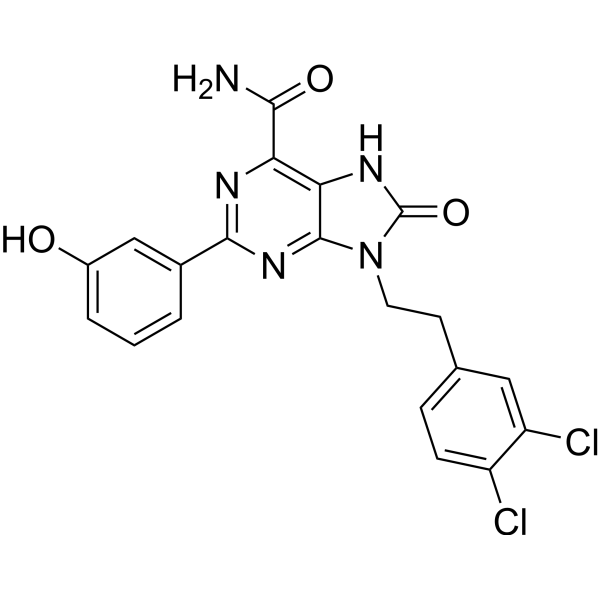
-
- HY-B1810S
-
|
C-78-d9
|
Adrenergic Receptor
|
Inflammation/Immunology
Endocrinology
|
|
Tulobuterol-d9 (hydrochloride) is the deuterium labeled Tulobuterol. Tulobuterol (C-78 free base) is a long-acting β2-adrenoceptor agonist, which reduces the frequency of exacerbations of chronic obstructive pulmonary disease and bronchial asthma. Tulobuterol is also a sympathomimetic agent used as a transdermal patch, and increases normal diaphragm muscle strength[1].
|
-

-
- HY-146346
-
|
|
PROTACs
HDAC
|
Inflammation/Immunology
|
|
HD-TAC7 is a potent PROTAC HDAC degrader with IC50 values of 3.6 μM, 4.2 μM and 1.1 μM for HDAC1, HDAC2 and HDAC3, respectively. HD-TAC7 can decreases NF-κB p65 in RAW 264.7 macrophages. HD-TAC7 can be used for the research of inflammatory diseases like asthma and chronic obstructive pulmonary disease (COPD) .
|
-
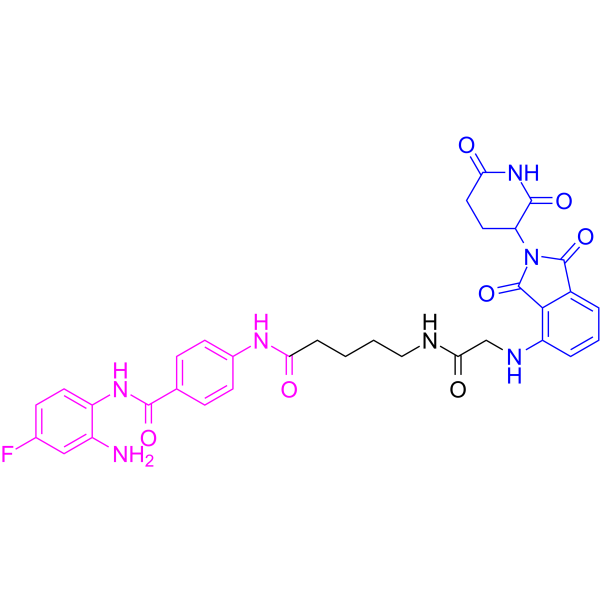
-
- HY-B1037R
-
|
Albuterol (Standard); AH-3365 (Standard)
|
Adrenergic Receptor
ERK
|
Inflammation/Immunology
Cancer
|
|
Salbutamol (Standard) is the analytical standard of Salbutamol. This product is intended for research and analytical applications. Salbutamol (Albuterol) is a short-acting beta-2 adrenergic receptor agonist with oral activity. Salbutamol promotes tumorigenesis of gastric cancer cells through the β2-AR/ERK/EMT pathway. Salbutamol is used to study bronchospasms caused by asthma and chronic obstructive pulmonary disease (COPD) .
|
-
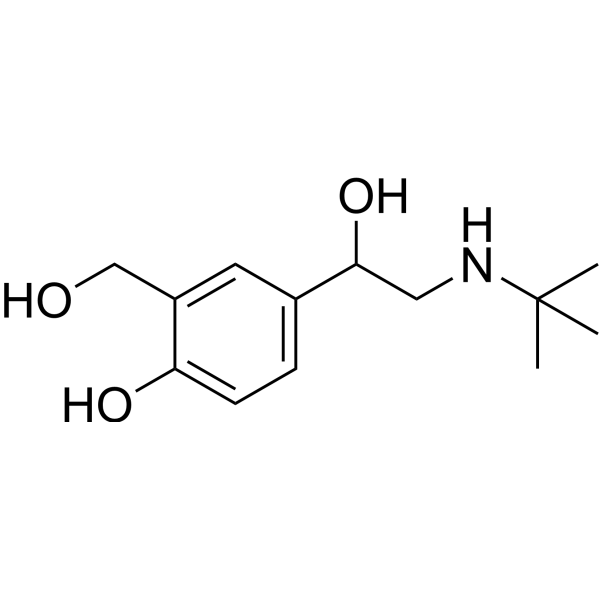
-
- HY-155300
-
|
|
Leukotriene Receptor
|
Inflammation/Immunology
|
|
BLT2 antagonist-1 (compound 15b) is a selective BLT2 antagonist that inhibits the chemotaxis of CHO-BLT2 cells with an IC50 of 224 nM. BLT2 antagonist-1 does not inhibits the chemotaxis of CHO-BLT1 cells. BLT2 antagonist-1 also inhibits the binding of LTB4 and BLT2 with a Ki value of 132 nM. BLT2 antagonist-1 can be used for the research of the inflammatory airway diseases such as asthma and chronic obstructive pulmonary disease .
|
-
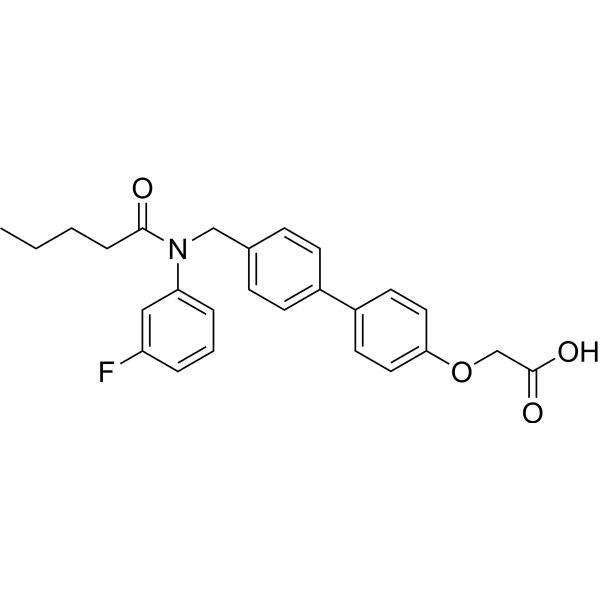
-
- HY-107909
-
|
1,3-Dimethylxanthine sodium glycinate; Theo-24 sodium glycinate
|
Adenosine Receptor
HDAC
Apoptosis
Interleukin Related
TNF Receptor
|
Cancer
|
|
Theophylline (1,3-Dimethylxanthine) sodium glycinate is a potent phosphodiesterase (PDE) inhibitor, adenosine receptor antagonist, and histone deacetylase (HDAC) activator. Theophylline sodium glycinate inhibits PDE3 activity to relax airway smooth muscle. Theophylline sodium glycinate has anti-inflammatory activity by increase IL-10 and inhibit NF-κB into the nucleus. Theophylline sodium glycinate induces apoptosis. Theophylline sodium glycinate can be used for asthma and chronic obstructive pulmonary disease (COPD) research .
|
-
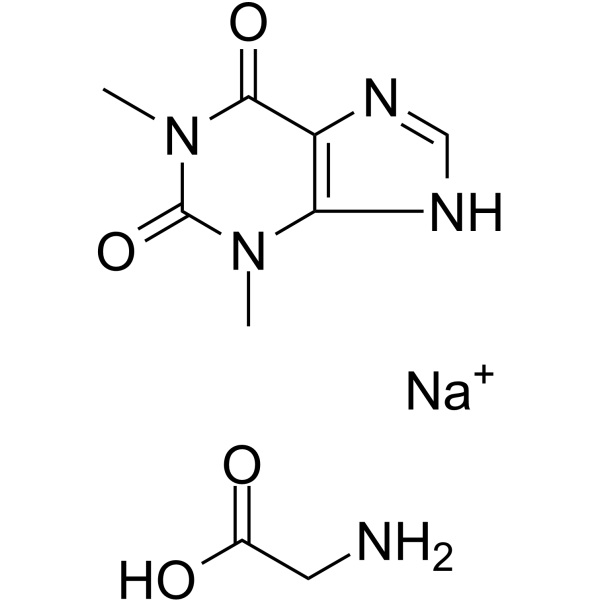
-
- HY-10790
-
|
SB-207499
|
Phosphodiesterase (PDE)
|
Inflammation/Immunology
|
|
Cilomilast (SB-207499) is a potent, selective and orally active inhibitor of Phosphodiesterase 4 (PDE4), with IC50s of ~100 and 120 nM for LPDE4 and HPDE4, respectively. Cilomilast shows selectivity for PDE4 over PDE1, PDE2, PDE3 and PDE5 (IC50=74, 65, >100, and 83 µM, respectively). Cilomilast has anti-inflammatory and immunomodulatory effects and can be used for thr research of asthma and chronic obstructive pulmonary disease (COPD) .
|
-
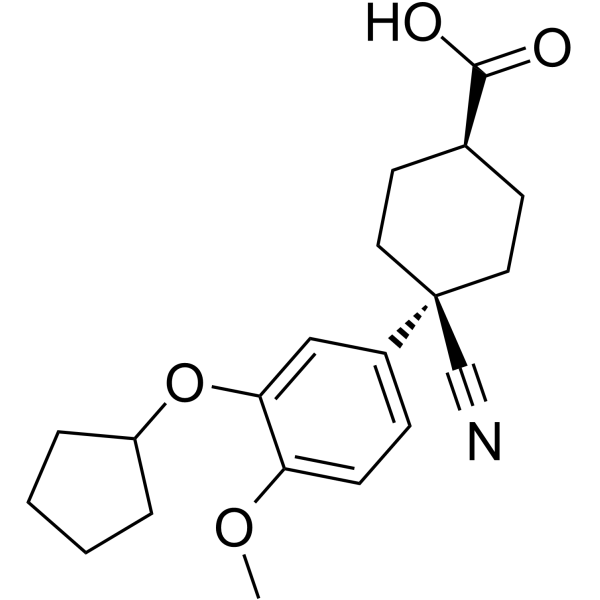
-
- HY-147518
-
|
|
p38 MAPK
|
Inflammation/Immunology
|
|
p38-α MAPK-IN-5 (compound 4e) is a potent p38α inhibitor with IC50s of 0.1 nM, 0.2 nM, 944 nM, 4100 nM for p38α, p38 β, p38γ, p38δ, respectively. p38-α MAPK-IN-5 has anti-inflammatory effect. p38-α MAPK-IN-5 has the potential for asthma and chronic obstructive pulmonary disease (COPD) research .
|
-
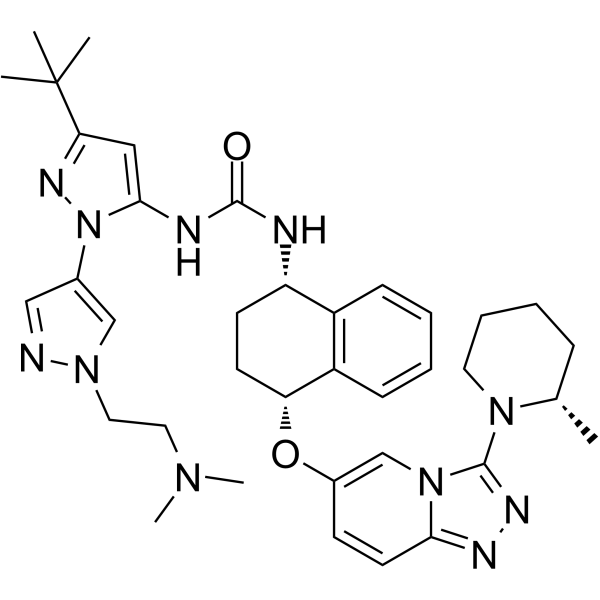
-
- HY-B0809
-
Theophylline
Maximum Cited Publications
6 Publications Verification
1,3-Dimethylxanthine; Theo-24
|
Phosphodiesterase (PDE)
Adenosine Receptor
HDAC
Apoptosis
Interleukin Related
TNF Receptor
Endogenous Metabolite
|
Cancer
|
|
Theophylline (1,3-Dimethylxanthine) is a potent phosphodiesterase (PDE) inhibitor, adenosine receptor antagonist, and histone deacetylase (HDAC) activator. Theophylline (1,3-Dimethylxanthine) inhibits PDE3 activity to relax airway smooth muscle. Theophylline (1,3-Dimethylxanthine) has anti-inflammatory activity by increase IL-10 and inhibit NF-κB into the nucleus. Theophylline (1,3-Dimethylxanthine) induces apoptosis. Theophylline (1,3-Dimethylxanthine) can be used for asthma and chronic obstructive pulmonary disease (COPD) research .
|
-

-
- HY-B0809B
-
|
1,3-Dimethylxanthine sodium acetate; Theo-24 sodium acetate
|
Endogenous Metabolite
Phosphodiesterase (PDE)
Adenosine Receptor
HDAC
Apoptosis
Interleukin Related
TNF Receptor
|
Cancer
|
|
Theophylline (1,3-Dimethylxanthine) sodium acetate is a potent phosphodiesterase (PDE) inhibitor, adenosine receptor antagonist, and histone deacetylase (HDAC) activator. Theophylline (1,3-Dimethylxanthine) sodium acetate inhibits PDE3 activity to relax airway smooth muscle. Theophylline (1,3-Dimethylxanthine) sodium acetate has anti-inflammatory activity by increase IL-10 and inhibit NF-κB into the nucleus. Theophylline (1,3-Dimethylxanthine) sodium acetate induces apoptosis. Theophylline (1,3-Dimethylxanthine) sodium acetate can be used for asthma and chronic obstructive pulmonary disease (COPD) research .
|
-
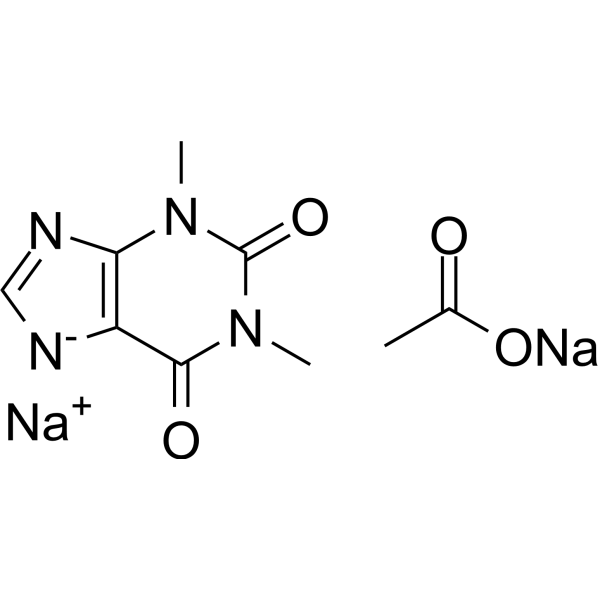
-
- HY-B0809A
-
|
1,3-Dimethylxanthine monohydrate; Theo-24 monohydrate
|
|
|
|
Theophylline (1,3-Dimethylxanthine) monohydrate is a potent phosphodiesterase (PDE) inhibitor, adenosine receptor antagonist, and histone deacetylase (HDAC) activator. Theophylline (1,3-Dimethylxanthine) monohydrate inhibits PDE3 activity to relax airway smooth muscle. Theophylline (1,3-Dimethylxanthine) monohydrate has anti-inflammatory activity by increase IL-10 and inhibit NF-κB into the nucleus. Theophylline (1,3-Dimethylxanthine) monohydrate induces apoptosis. Theophylline (1,3-Dimethylxanthine) monohydrate can be used for asthma and chronic obstructive pulmonary disease (COPD) research .
|
-

-
- HY-B0809R
-
|
1,3-Dimethylxanthine(Standard); Theo-24 (Standard)
|
Phosphodiesterase (PDE)
Adenosine Receptor
HDAC
Apoptosis
Interleukin Related
TNF Receptor
Endogenous Metabolite
|
Cancer
|
|
Theophylline (Standard) is the analytical standard of Theophylline. This product is intended for research and analytical applications. Theophylline (1,3-Dimethylxanthine) is a potent phosphodiesterase (PDE) inhibitor, adenosine receptor antagonist, and histone deacetylase (HDAC) activator. Theophylline (1,3-Dimethylxanthine) inhibits PDE3 activity to relax airway smooth muscle. Theophylline (1,3-Dimethylxanthine) has anti-inflammatory activity by increase IL-10 and inhibit NF-κB into the nucleus. Theophylline (1,3-Dimethylxanthine) induces apoptosis. Theophylline (1,3-Dimethylxanthine) can be used for asthma and chronic obstructive pulmonary disease (COPD) research .
|
-
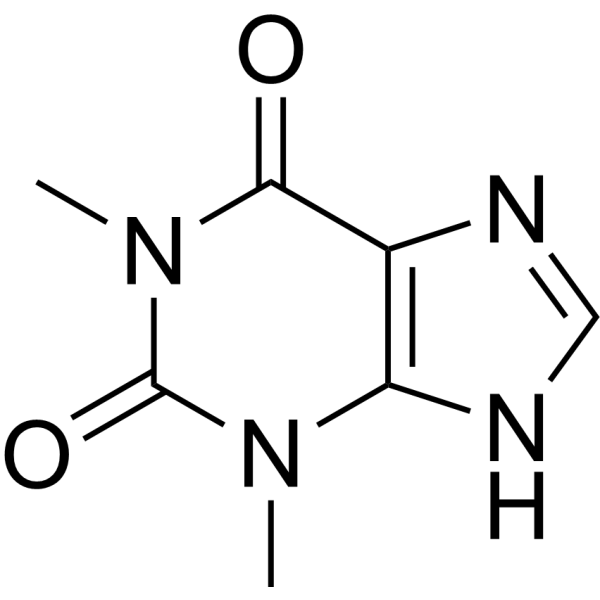
| Cat. No. |
Product Name |
Target |
Research Area |
-
- HY-P99673
-
|
REGN-3500; SAR-440340
|
Interleukin Related
NF-κB
|
Inflammation/Immunology
|
|
Itepekimab (REGN-3500) is an IgG4 monoclonal antibody against IL-33. Itepekimab reduced airway inflammation and related tissue damage in preliminary clinical studies. Itepekimab has potential effects in asthma, chronic obstructive pulmonary disease (COPD), and atopic dermatitis (AD) .
|
| Cat. No. |
Product Name |
Category |
Target |
Chemical Structure |
| Cat. No. |
Product Name |
Chemical Structure |
-
- HY-B1037S
-
|
|
|
Salbutamol-d3 is the deuterium labeled Salbutamol. Salbutamol is a short-acting β2-adrenergic receptor agonist used for the relief of bronchospasm in conditions such as asthma and chronic obstructive pulmonary disease (COPD).
|
-

-
- HY-B1037S2
-
|
|
|
Salbutamol-d9 is the deuterium labeled Salbutamol. Salbutamol is a short-acting β2-adrenergic receptor agonist used for the relief of bronchospasm in conditions such as asthma and chronic obstructive pulmonary disease (COPD).
|
-

-
- HY-B0241S
-
|
|
|
Ipratropium-d3 (bromide) is the deuterium labeled Ipratropium bromide. Ipratropium bromide (Sch 1000) is a muscarinic receptor antagonist, with binding IC50 values of 2.9 nM, 2 nM, and 1.7 nM for M1, M2, and M3 receptors, respectively. Ipratropium bromide can be used in the research for COPD (chronic obstructive pulmonary disease) and asthma[1][2][3].
|
-

-
- HY-B0241S1
-
|
|
|
Ipratropium-d7 (bromide)eis the deuterium labeled Ipratropium bromide. Ipratropium bromide (Sch 1000) is a muscarinic receptor antagonist, with binding IC50 values of 2.9 nM, 2 nM, and 1.7 nM for M1, M2, and M3 receptors, respectively. Ipratropium bromide can be used in the research for COPD (chronic obstructive pulmonary disease) and asthma[1][2][3].
|
-

-
- HY-B1037S3
-
|
|
|
Salbutamol-d9 (acetate) is the deuterium labeled Salbutamol[1]. Salbutamol is a short-acting β2-adrenergic receptor agonist used for the relief of bronchospasm in conditions such as asthma and chronic obstructive pulmonary disease (COPD).
|
-

-
- HY-B1810S
-
|
|
|
Tulobuterol-d9 (hydrochloride) is the deuterium labeled Tulobuterol. Tulobuterol (C-78 free base) is a long-acting β2-adrenoceptor agonist, which reduces the frequency of exacerbations of chronic obstructive pulmonary disease and bronchial asthma. Tulobuterol is also a sympathomimetic agent used as a transdermal patch, and increases normal diaphragm muscle strength[1].
|
-

Your information is safe with us. * Required Fields.
Inquiry Information
- Product Name:
- Cat. No.:
- Quantity:
- MCE Japan Authorized Agent:












































